#iberian wolves
Video
youtube
4 notes
·
View notes
Note
Could I maybe rq another stimmy wolf? Wolves arw great autism creatures

046. they ARE such great autism creatures!!!!!
512 notes
·
View notes
Photo

Iberian Wolf by Ian Macfadyen
444 notes
·
View notes
Text
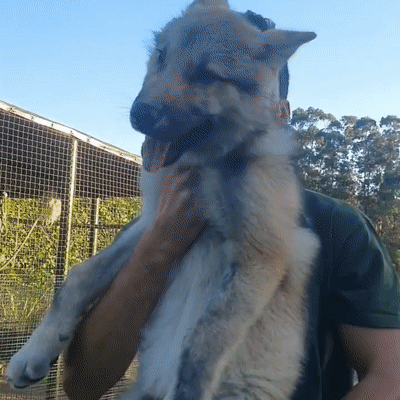



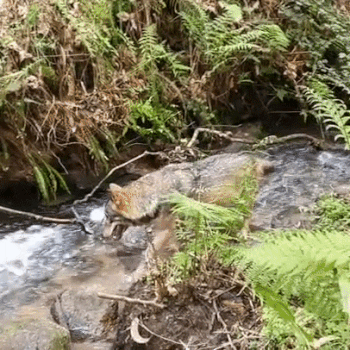


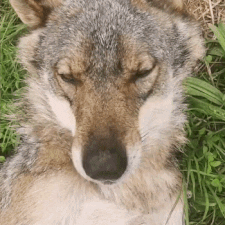
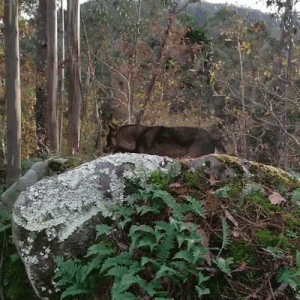

Happy Wolfenoot! even more Iberian wolves~
x x x
x x x
x x x
Banner
I made these gifs-- please link this post if you use!
#wolfenoot#stim stuff#my stim stuff#wolves#iberian wolf#lobo iberico#Lobo ibérico#spanish wolf#take me here#comfort#canis lupus signatus#pups#nature#kin#therian#river#stream
21 notes
·
View notes
Note
what type of wolf would YOU be?
GREAT QUESTION id be an iberian wolf! :3

they are small in comparison to other wolves and they have cool white marks on their lips and black marks on tail and front legs!!

also they live in small packs!!!!!! idk why but i think thats awesome
#wolves#love them!!!!!!!#overall they are really similar to eurasian wolves#who are so common sometimes its a problem for humans#but iberian wolves are smaller and live only in spain and portugal!#my post#ask
2 notes
·
View notes
Text
youtube
Wolf puppies in Denmark ❤🐺🐺🐺🐺🐺🐺🐺❤
1 note
·
View note
Text
A writer’s guide to forests: from the poles to the tropics, part 6
Welcome back. We’re getting closer to the equator. Things are really heating up now.(…I’ll see myself out now)
Mediterranean forest
Here is where the line between myth and reality begin to blur, and history reveals itself.
Location- The region around the Mediterranean Sea, bordered by the Alps and the deserts of the Middle East and Northern Africa. Much of the forest area has been altered by human activity, with the largest expanse remaining located in the Iberian peninsula.
Climate- Warm and dry. Mountains are more reliably wet, with higher elevations being seasonal.
Plant life- Trees are evergreen at or near sea level, with cork oak and olive common. Atlas cedar grow in Morocco, and the Levant is home to Cedar of Lebanon. In Alpine regions, deciduous species such as Hornbeam, lime, and elm eventually give way to pines as one goes higher. Dry areas produce many hardy species of ground cover, including the unusual dewy pine (Drosophyllum lusitanicum)- this is the only perennial carnivorous plant that does not grow in a wetland or humid environment.
Animal life- Due to millennia of human activity, predators, such as lions, wolves, bears, and lions have mostly or totally vanished. The largest hunter one may stumble across is the Iberian Lynx, though this is unlikely. Extinction has also affected prey species, with the Pyrenees ibex going extinct twice (the second time occurred after a clone ibex died shortly after birth). Conservation efforts have meant that species from eagles to dormice have a chance to recover. North Africa and Gibraltar are home to Barbary Macaques. Where humans manage forestland, herds of goats and pigs forage.
How the forest affects the story- Unless you want your characters high in the mountains, you don’t have to worry too much about the seasons( granted, winters can still be cold, but trees are evergreen and the summer heat will be the biggest worry) As these forests have been cleared and managed since the Neolithic, it is your choice as to where your characters fit into the grand picture. Do your characters and their society harvest the forest or graze their livestock there? Or maybe your characters have decided to restore the forest. What would restoration efforts look like? And of course, history and prehistory can provide a backdrop and various peoples to interact with. Could your characters have crossed paths with Otzi the iceman? What about the Romans, pilgrims, crusaders, Phoneticians, or Celtic-Iberians? And you don’t have to limit yourself to history. This is the land of the Greek Myths, and countless others as well. Gods, heros, and monsters may lurk behind the trees and in the caves.
#writing#creative writing#writing guide#writing inspiration#writing prompts#writers#writer on tumblr#writeblr#writing community
46 notes
·
View notes
Note
I saw your wolf creations and I was very fascinated with them. They look very lovely. I tried to make out whether you did a caspian sea wolf before but I wasn‘t sure. Would you consider making a caspian sea wolf inspired plush in the future and if yes, could you imagine making one for sale?
Thank you! I haven't done a Caspian sea wolf (Canis lupus campestris, also known as a Steppe wolf) specifically, though a couple of my wolves have the reddish tones that are common in that population.
Both have been adopted. The first has been named Amadeus (first two photos) and the Iberian was named Neihe (bottom two).
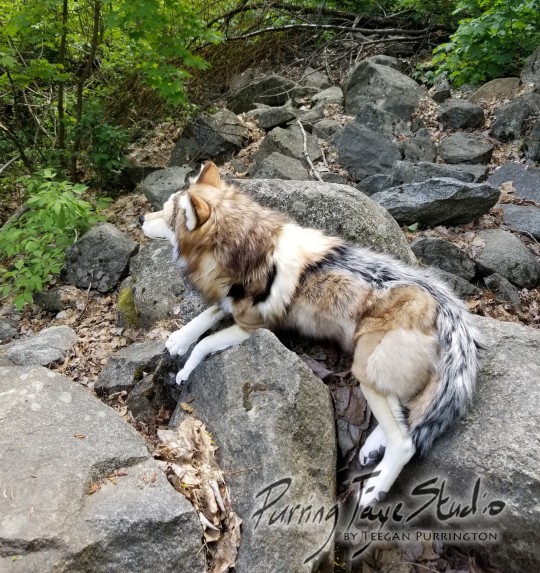


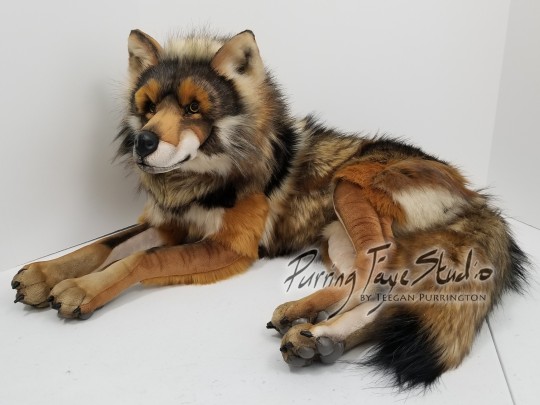
I'd definitely be open to making one for sale in the future!
#plush artist#faux fur#wolf plush#art plush#answered asks#send me asks#Amadeus is darker and more brown than I intended tbh#he was the prototype so I didn't know how he'd turn out
202 notes
·
View notes
Note
hii! can i request an iberian wolf affirmation with cottage-core aesthetics with the text “wolves ae fierce” :D? thank u (/nf)

some of the prettiest wolves on earth tbh 🥰
#therian#otherkin#alterhuman#wolf therian#wolfkin#iberian wolf therian#iberian wolf kin#species affirmations#therian community
16 notes
·
View notes
Text
Provence, Gaul and Mr Grape Speculation.
Aka despite the trickling of Gaulish Operators since Phantom and the Crimson Solitaire, she has not been confirmed as being Gaulish despite her name and as such, I want to talk about things relating to it.
And because I really want an excuse to talk about her. Without further ado though:
So first thing's first: Why theorize that Provence could be Gaulish?
The reason for that lies in her name because Provence is the name of a region in France, known for it's wine and lavender fields.
I'll keep my lips sealed about the wine for now, but in regards to the lavender fields it's what inspired her purple fur. She fits in nicely with Texas and Lappland who themselves are named after places outside of Italy, in their case because of the wolves they're based off.
And just for note: Provence was a Roman province, their first beyond the Alps but since they left in at the end of the fifth century, Provence has not been a part of Italy, instead being a part of France since 1468.
We'll get onto the wolf she's inspired by in a bit but first, while the above can be used to elaborate on her Siracusan roots, how does her inspiration compare to confirmed Gaulish operators?
For instance, these are the Gaulish Operators who were released before Phantom and the Crimson Solitaire (if I'm right):
Aciddrop
Astesia
Mousse
Phantom
Aciddrop and Astesia I am not aware of anything connecting them to Gaul before their module and Astgenne's files dropped respectively.
Mousse and Phantom on the other hand are quite obvious. Mousse is a French dessert and Phantom's whole character references the Phantom of the Opera, a French novel set in Paris. Provence is similar to them in regards to name and inspiration but there is something that separates them and it's the fact that they have voice lines furthering their connection.
From Mousse and Phantom respectively:


The Avenue des Champs-Élysées is a real avenue in Paris, whereas Gaspard de la Nuit is French, meaning "treasurer of the night" if I'm correct and is also a suite of piano pieces by a French composer.
Provence doesn't make any remarks about her home or anything in French or referencing anything from France, which isn't a huge deal. Aciddrop and Astesia had less (or more subtle) and were confirmed to be Gaulish so Provence's chances don't seem worse for it.
The Fall of Gaul.
This is an interesting part of this and one I can't see being too long.
But a thing of note is that the War of the Four Emperors occurring in 1053 and the Chernobog incident happens at the end of 1096. A lot of characters saw this unfold without being as old as Hellagur. Aciddrop and Astesia's families are mentioned and likely experienced it, whether as a child or an adult.
And on them, a lot of Gallians immigrated to Columbia whereas a lot of others remained where they were and watched as the territory ended up in the hands of Victoria, Leithania or Ursus. The latter two of those btw we do not see btw. We have only seen Gaulish characters from Victoria or Columbia, with only one exception being Clément Dubois from Hortus de Escapismo, as confirmed by the recent Twitter post/Terra Historicus, who is an Iberian that's descended from Gaul.
Which is to say that there's proof that Gallian refugees have gone as far as Iberia, although that's redundant because of the IS2 relic Wrath of Siracusans of all things. The "Super Siracusans" monthly squad expands upon it's lore as such:

So Provence's family immigrating from Gaul to Siracusa is more than plausible because the reverse has happened before and perhaps is emblematic of some sort of relationship the two countries has, this one conundrum aside.
But even if there isn't, Kal'tsit took Crownslayer to Siracusa, seemingly not because she had family there but because she is a Lupo/passes enough for one by Red. Provence's family may have fled to Siracusa simply for that reason.
Wine
Remember how I mentioned Provence was known for it's wine? Well here's that. See, Provence is known specifically for it's rosé wine.
I suggest reading into it yourself because it's genuinely really fascinating. But France is the leading country for rose wines, with Provence being the leading wine region for rose in the world. Around eighty percent of all wines made in Provence are rosé and I saw something that said it was the only wine region in the world who drink pink wine over red or white.
Which makes me think about Mr Grape, the wolf that appears in her E2 and who exists in canon:

And I mention all of this because I do think that wine is synonymous with Gaul because of the significance it holds within Phantom and the Crimson Solitaire. Both because of the Troupe Master, or being known as Tragodia, is so connected to it (such as having two wine relics associated with him) but because the description of Royal Liqueur:

And so with the region of Provence's relationship with on rosé wine, the significance placed on wine by Phantom and the Crimson Solitaire and Mr Grape being named such by Provence, I think her connection to Gaul is pushed even further.
The Beast of Gévaudan
Now, as for what sort of wolf Provence is based on, I believe that there's never been any proof towards it like there is for Texas, Lappland and Quartz. Any guess as to what it may be based on the appearance of her E2 is also very difficult because:

Yeah it's not an ordinary wolf but it's also not one that you could easily distinguish as something else however. It's just a large purple wolf with lighter fur here and there as well as body armour for some reason.
The trail ends there.
Or does it. Because if you take into account the inspiration Provence takes in France and begin your search there you'll quickly learn of a beast that stalked the ancient region of Gévaudan. Described as a wolf but not a wolf, it went on a killing spree and was quite the mythical creature while it existed.
I place quite a lot of stock into this idea of Provence's inspiration and Mr Grape's identity, not only because it's unique and really it looks unlikely they could be mundane but for some aspects of Mr Grape.

The Beast of Gévaudan was described as being larger than an ordinary wolf up to the size of a horse, with a broad chest, a snout like a greyhound, a white underbelly and what I find the most defining: a long thin tail, normally described with a tuft at it's end.
If you look at various depictions of the beast you'll notice a lot of these features between all of them so I think it's fine to use as a baseline.
So how does Mr Grape compare to that description?
Sizewise if you take these as ordinary wolves:


(Lunacub's are but with Emperor are Signore dei Lupi)
Then I think that he would count as larger than ordinary wolves. I also think that Mr Grape is larger than the wolves present in Projekt Red, Penance and Vigil's E2 art and compared to some, by a large margin.
He also has the white underbelly and as I stated to be the most defining: a long thin tail. One noticeably so when compared to Provence, almost purposefully contrasting. Cause you'd imagine, as a reflection of her that his tail would be just as big and fluffy but it's the opposite:

It's thin and long and only tapers out towards the end despite it's already bizarre thinness. Compare that to Provence's in the same image:

You can find more art from her artist Nian that depicts her and other character's tails and Mr Grape's tail is a stark difference.
Here is Provence's Vitafield skin:


And again Mr Grape's tail is depicted the same. I think it's purposeful.

Also as compared to his appearance in her E2, it appears like his snout is more elongated like the description as well as the white underbelly being more visible and how broad his chest is.
One last thing on his appearance is that a lot of stories of the Beast of Gévaudan is how resilient it is, taking musket shots and being stabbed but shrugging it off with being scared off at most. Maybe this is why he's wearing so much body armour, as to hint at how resilient it's inspiration is.
Now onto the last pieces because there's one notable story to come out of the Beast of Gévaudan's various attacks that I want to bring up and that's the story of the Maid of Gévaudan, or of Marie-Jeanne Vallet.
She was one of the several people attacked by the Beast of Gévaudan but at the time she was armed with a makeshift spear so when it attacked her, she was able to stab it in the chest, saving her own life as well as that of anyone with her. For the action she was called the Maid of Gévaudan.
Here's a statue of the event:

Now whether or not Provence would be based off of her or not I can't say. She resembles Mr Grape so much and as he's an extension of her and a reflection if you will, she's sort of the Beast of Gévaudan herself but it may be a combination like Projekt Red being Red Riding Hood and the Big Bad Wolf.
That said, in the voiceline mentioning Mr Grape she implies that they met under curious circumstances, likely unintentional so who knows what the story there is and whether it could mirror this one:

But to wrap this up, Provence is almost definitely Gaulish and maybe it's because most of her oprecs came out prior to Phantom and the Crimson Solitiare, she hasn't been confirmed as such yet. But here's hoping!
Because two skins, two oprecs, a dormitory theme heavily featuring her, a decently large presence in an event and another character being romantically interested in her isn't enough for me. I want more for her and who knows, maybe there's a treasure trove of upcoming reveals for her.
One can only hope.
#arknights#provence#woo!#finally talked about provence!#I am hoping for those reveals#an event would be nice#but not holding my breath on that#just#one more oprec to explain it all?#oh#read her oprecs btw#they're my personal favourites
16 notes
·
View notes
Text

002
#coat based on the iberian wolf! biig stretch#ill get to requests in a bit btw i want to draw my own ideas first hehe#this one is a little inspired by 1coweveryday.. what can i say i like the blue backgrounds!#wolves#wolf
307 notes
·
View notes
Text

El Nuberu is a character of Asturian, Cantabrian, Galician and northern Castilian mythology- a bearded old man with a wide-brimmed hat who lives in the clouds, often depicted wearing goat leathers he has been reported to drive a charior pulled by Iberian wolves. El Nuberu (literally "Clouder") controls the rain and lightning, and likely derives from the old Iberian Celtic weather god, Taranis.
There are stories of Nuberu falling from the sky and blessing peasants who aid his return, though he is just as capable of being vindictive and petty; easily destroying fields and homes to drive farmers into ruin.
#nuberu#myart#ink#illustration#watercolor#spanish#spanish folklore#mythology#folklore#cantabria#galicia#asturia#celtic mythology
25 notes
·
View notes
Text


#as usual: reblog? 🥺👉👈❤️#+ I do not consent to reposts or use in machine learning programs#guiltyart#wolves#sona#Iberian wolf#vent art#?? like half#it's just like. tiredposting#ms paint#doodle#shitpost#memes#artists on tumblr#human artist#emotionally exhausted#mentally exhausted#adhd#bleak#fatigue#burnout#adhd burnout#autistic burnout#dystopia#therian#grind culture#hustle culture#trying my best#man i drew them. so. Roumbd 💞💞💞💞
14 notes
·
View notes
Text
Deep dives into folklore: Portuguese folklore
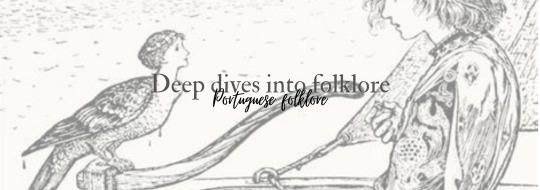
Portuguese folklore, a mesmerizing mosaic of myths and legends, serves as a profound testament to the cultural heritage of the nation. Woven over centuries, this intricate tapestry reflects the dynamic interplay of historical influences, blending the legacies of Phoenicians, Romans, Moors, Celts, and Christians. Rooted in a diverse historical landscape, Portuguese folklore encapsulates the essence of the country's identity, encapsulating the collective imagination of its people. As we embark on a deep dive into this mystical realm, we unveil the stories, characters, and cultural significance that have endured through the ages, illuminating the captivating spirit of Portugal's folklore.
Portuguese folklore has deep roots in the country's history, blending influences from various civilizations that have shaped the region over millennia. Phoenician, Roman, Moorish, and Celtic influences, among others, have contributed to the diverse range of myths and legends that make up Portugal's folklore.
One of the earliest influences on Portuguese folklore is the Roman presence in Lusitania. The Romans introduced their own deities and myths, blending with the existing indigenous beliefs. As Christianity took root in the region, a symbiotic relationship developed between pagan and Christian elements, resulting in a unique blend of folklore that reflects Portugal's cultural identity.
The Lusitanian Mythical Heritage:
Before Roman rule, the Lusitanians, an ancient Celtic people, had their own pantheon of deities and mythical beings. The god Bandua, associated with war and protection, and the goddess Ataegina, linked to fertility, are examples of Lusitanian figures that persisted in local folklore.
The Moura Encantada:
The Moura Encantada, or the Enchanted Moorish Maiden, is a prominent figure in Portuguese folklore. These mythical beings are often beautiful women with magical powers, dwelling in hidden places or trapped in enchantments. Stories of love, loss, and magical intervention surround the Moura Encantada, emphasizing themes of fate and destiny.
The Lobo Ibérico (Iberian Wolf):
Wolves hold a significant place in Portuguese folklore, symbolizing both danger and wisdom. The Lobo Ibérico is a recurring motif, representing the untamed wilderness and the struggle for survival. Folk tales often feature wolves as shape-shifters or mystical guardians, embodying the complex relationship between humans and nature.
The Barco da Roda (Wheelbarrow Boat):
Coastal regions of Portugal have tales of the Barco da Roda, a phantom boat that appears during storms. Believed to be a harbinger of doom, this spectral vessel is associated with the souls of the deceased. The folklore surrounding the Barco da Roda reflects the maritime culture and the inherent connection between the Portuguese people and the sea.
Portuguese folklore serves as a mirror reflecting the collective consciousness of the nation. It embodies the struggles, triumphs, and enduring spirit of the Portuguese people. The fusion of pagan and Christian elements in folklore illustrates the adaptive nature of Portugal's cultural identity.
Festivals and celebrations often incorporate folklore, with traditional dances, music, and costumes bringing mythical characters to life. The Feast of São João, celebrated across Portugal, features rituals and customs that trace their roots to ancient solstice celebrations, merging pre-Christian traditions with Christian elements.
In conclusion, Portuguese folklore is a captivating journey through the cultural tapestry of a nation. Its origins in diverse historical influences, the presence of mythical figures like the Moura Encantada and the Lobo Ibérico, and its cultural significance in festivals and celebrations all contribute to the richness of Portugal's folklore. Through the ages, these stories have been passed down, evolving and adapting while preserving the essence of Portugal's enchanting heritage.
Taglist (reply or reblog to be added): @axl-ul @crow-flower @thoughts-fromthevoid @alderwoodbooks @harleyacoincidence @tuberosumtater @sonic-spade @theonlygardenia @holymzogynybatman @nulliel-tres @w0rkah0licz @sylvanthorn @tigertaurus22 @profiterole-reads @mathias-musings @1899adgg1997tbmd @grimmparanormalinvestigations
#writeblr#writers of tumblr#writing#bookish#booklr#fantasy books#creative writing#book blog#ya fantasy books#ya books#deep dives into folklore#deep dives#folklore#mythology#portuguese#portuguese folklore
9 notes
·
View notes
Note
Why does Basque have a native word for wolf, when wolves don't live in the Basque Country?
Kaixo anon!
It's precisely the existance of a native word what should make us think that wolves did live in EH and our ancestors created a word to name them, right? So if they lived here and now they don't, what happened?

Estimated distribution of wolves in Spain in 1850, 1970 and nowadays. Deep blue = high chances of wolves, light blue = intermediate chances, yellow = scarce presence.
The central years of the 20th century were horrible for this species: wolves were eradicated from EH in the 50s and were put on the brink of extintion by 1970. All this was manmade, just because wolf = bad.
In the 70s the hard work of naturalist Félix Rodríguez de la Fuente was fundamental for changing people's minds and start protecting wolves. He was the first documentary commenter in Spain, and filmed a beautiful TV series about Iberian fauna that became a hit. Rodríguez de la Fuente adored wolves and made his personal goal to make audiences feel the same: he followed a pack, gained their trust and was even allowed to play with them, they also would come to him when he howled, much to the awe of the millions watching TV. He was truly crucial.
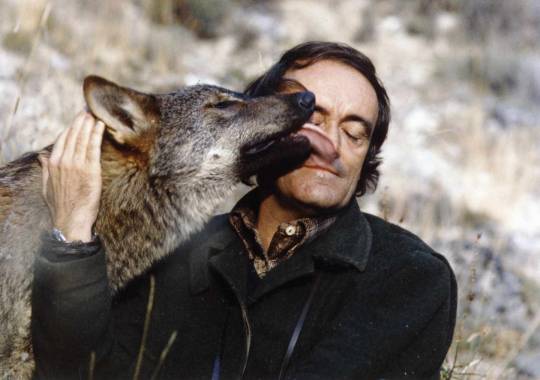
Since then many associations have been working to protect and recover this beautiful animal and, as you can see, they're succeeding.
Btw, there are no local packs in EH yet, but wandering wolves have been spotted, and sometimes packs from the surrounding areas shyly walk through our lands. We hope to know there are local, established packs in EH again in our lifetime.
#euskadi#euskal herria#basque country#pais vasco#pays basque#wolf#animals#nature#history#anons#felix rodriguez de la fuente
62 notes
·
View notes
Text
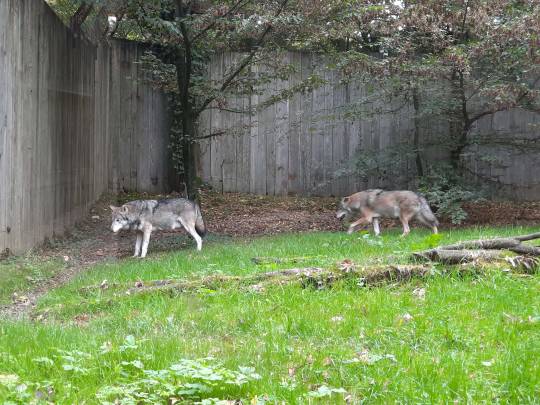


Sad to learn that the wolves I saw at GaiaZoo last year have both passed away a few months ago. Both were sixteen so really old even for zoo wolf standards. They were brothers.
I wonder what new species will take up the enclosure now, I remember back when I was there they were saying the next species was going to be Iberian wolves, but based on their vlog and blog about this the plan might've changed? We'll see.
4 notes
·
View notes